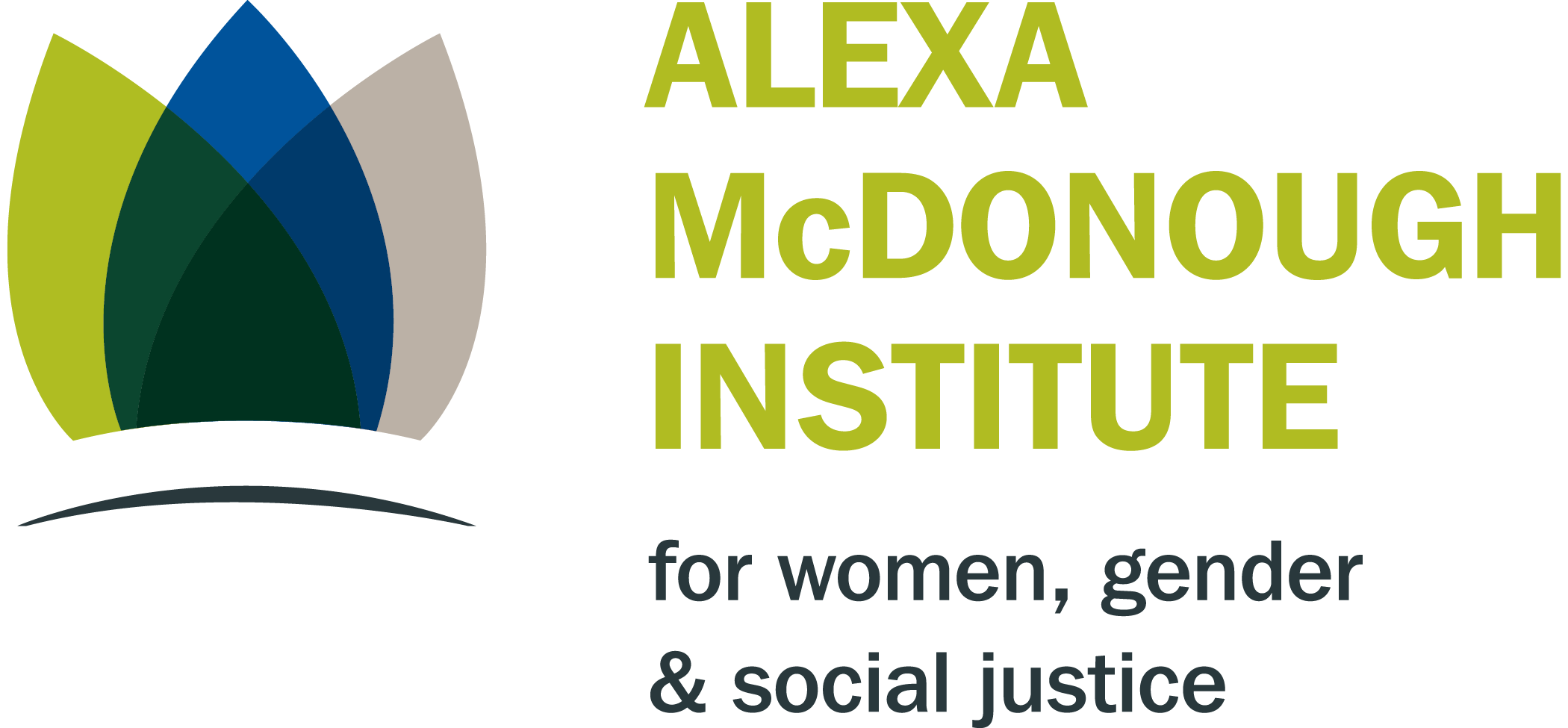In/Visibility in/of Feminist Theory
Mots-clés :
feminist theory, feminist activism, visibility, voiceRésumé
Cluster Editors
Ilya Parkins is Associate Professor of Gender and Women’s Studies at the University of British Columbia, Okanagan Campus. She is the author of Poiret, Dior and Schiaparelli: Fashion, Femininity and Modernity (2012) and the co-editor of Cultures of Femininity in Modern Fashion (2011). Her research has appeared in such journals as Feminist Review, Australian Feminist Studies, Time and Society, and Biography.
Eva C. Karpinski is Associate Professor at the School of Gender, Sexuality and Women’s Studies at York University in Toronto. She is the author of Borrowed Tongues: Life Writing, Migration, and Translation (2012) and co-editor of Trans/acting Culture, Writing, and Memory: Essays in Honour of Barbara Godard (2013).
Références
Alexander, M. Jacqui. 2005. Pedagogies of Crossing: Meditations on Feminism, Sexual Politics, Memory, and the Sacred. Durham, NC: Duke University Press.
Baxi, Upendra. 2006. The Future of Human Rights. 2nd edition. New Delhi: Oxford University Press.
Bridenthal, Renate, Susan Stuard, and Merry E. Wiesner-Hanks. 1998. Becoming Visible: Women in European History, third edition. Andover, UK: Cengage.
Bruegemann, Brenda Jo et al. 2001. "Becoming Visible: Lessons in Disability.” College Composition and Communication 52: 368-98.
Donovan, Kathleen M., ed. 1998. Feminist Readings of Native American Literature: Coming to Voice. Tucson: University of Arizona Press.
Drevahl, D. 1995. “Coming to Voice: The Power of Emancipatory Community Interventions.” Advanced Nursing Science 18, no. 2: 13-24.
Hesford, Wendy. 2011. Spectacular Rhetorics: Human Rights Visions, Recognitions, Feminisms. Durham, NC: Duke University Press.
Jennings, Kevin, ed. 1994. Becoming Visible: A Reader in Gay and Lesbian History for High School Students. Boston: Alyson Books.
Keller, Evelyn Fox. 1986. “Making Gender Visible in the Pursuit of Nature’s Secrets.” In Feminist Studies/Critical Studies, edited by Teresa de Lauretis, 67-77. Bloomington: Indiana University Press.
Kramarae, Cheris and Paula A. Treichler. 1985. A Feminist Dictionary. London: Pandora.
Lorde, Audre. 1984. “The Transformation of Silence into Language and Action.” In Sister Outsider: Essays and Speeches, 40-44. Freedom, CA: The Crossing Press.
Malhotra, Sheena and Aimee Carrillo Rowe. 2013. “Still the Silence: Feminist Reflections at the Edges of Sound.” In Silence, Feminism, Power: Reflections at the Edges of Sound, edited by Sheena Malhotra and Aimee Carrillo Rowe. London: Palgrave.
Nochlin, Linda. 1971. “Why Have There Been No Great Women Artists?” ARTNews. January: 22-39, 67-71.
Peeren, Esther. 2014. The Spectral Metaphor: Living Ghosts and the Agency of Invisibility. New York: Palgrave Macmillan.
Rich, Adrienne. 1986. “Invisibility in Academe.” In Blood, Bread and Poetry: Selected Prose 1979-1985. New York: Norton.
Torrens, Kathleen M. and Jeannette E. Riley. 2004. “Students Coming to Voice: The Transformative Influence of Feminist Pedagogies.” The Journal of the Midwest Modern Language Association 37: 60-73.
Yamada, Mitsuye. 1983. “Invisibility is an Unnatural Disaster: Reflections of an Asian-American Woman.” In This Bridge Called my Back: Writings by Radical Women of Color, edited by Gloria Anzaldùa and Cherríe Moraga. New York: Kitchen Table.
Téléchargements
Publié
Numéro
Rubrique
Licence
© Atlantis: Études critiques sur le genre, la culture, et la justice 2015

Cette œuvre est sous licence Creative Commons Attribution 4.0 International.
Les auteurs qui publient dans cette revue acceptent les conditions suivantes:
1. Les auteurs conservent les droits d’auteur et accordent le droit de première publication à la revue. L’œuvre est simultanément sous licence internationale Creative Commons Attribution 4.0 qui permet à d’autres personnes de la partager en citant dans les remerciements l’auteur de l’œuvre et sa publication initiale dans cette revue.
2. Les auteurs savent que les articles publiés dans Atlantis sont indexés et disponibles par le biais de divers outils de recherche universitaires et professionnels, y compris, entre autres, Erudit.
3. Les auteurs peuvent conclure des ententes contractuelles supplémentaires et distinctes pour la distribution non exclusive de la version de l’article publiée par la revue (c’est-à-dire, l’afficher dans un dépôt institutionnel ou la publier dans un livre), en signalant qu’elle a été initialement publiée dans cette revue.
4. Les auteurs sont autorisés et encouragés à prépublier leur œuvre, c’est-à-dire à la publier en ligne (dans un dépôt institutionnel ou sur leur site Web, par exemple) avant et pendant le processus de soumission. Cela peut conduire à des échanges productifs, ainsi qu’à ce que le travail publié soit cité plus tôt et plus souvent. Renseignez-vous davantage ici sur la prépublication.







